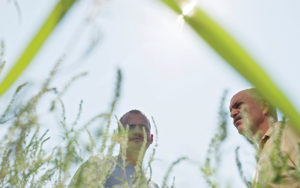Harvesting Pollen: Nothing to Sneeze At
There aren’t many farmers in North America who intentionally plant and nourish weeds on their farm. But Jim Sneed, who farms about 400 acres near Sedalia, Mo., is anything but conventional. The 10-acre plot of ragweed he plants each year...

Harvesting Pollen: Nothing to Sneeze At
There aren’t many farmers in North America who intentionally plant and nourish weeds on their farm. But Jim Sneed, who farms about 400 acres near Sedalia, Mo., is anything but conventional. The 10-acre plot of ragweed he plants each year...There aren’t many farmers in North America who intentionally plant and nourish weeds on their farm. But Jim Sneed, who farms about 400 acres near Sedalia, Mo., is anything but conventional.
The 10-acre plot of ragweed he plants each year should be proof enough. That’s because Sneed is one of a small number of farmers across the U.S. and Canada who collect pollen from a variety of grasses, trees and weeds, and sell their harvest to pharmaceutical companies that turn the pollen into extracts for treating and testing of allergies.
Sneed is actually the second generation to manage the pollen collection business, having taken over from his late father, who began collecting pollen back in 1968. Today, Sneed and his wife, Stephanie, along with their youngest son, Jason, run their pollen collection business.
“All total, there are about 50 different plants and trees from which we collect pollen,” he told us last summer. “Of course, we don’t harvest every type of pollen every year. We generally get a list of requests early in the year, so we have time to plant a particular crop if we need to.”
Sneed, who prefers not to share many of his methods and innovations for fear of giving away too many hard-earned secrets, notes that pollen harvesting has little in common with growing corn or soybeans. For starters, there isn’t any equipment commercially available for pollen harvest.
Instead, Sneed designed and built two of his own machines. Tree pollen, meanwhile, is collected with the aid of two bucket trucks.
Sneed also bales many of the grasses and clover he uses for pollen production. For that work he trusts a Massey Ferguson® 2946A model round baler with a silage kit. “It’s been working perfectly,” Sneed relates.




